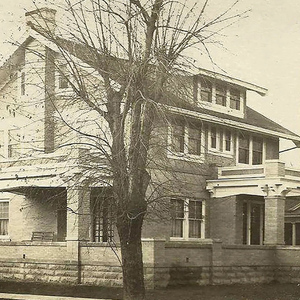Advice Needed: Moisture Management for Historic Duplex with New Insulation
Hello Fine Homebuilding community,
I’m looking for advice on managing moisture in my historic duplex, built approximately 125 to 175 years ago. I recently participated in the Connecticut Home Energy Solutions℠ program, which included a comprehensive home energy assessment and recommendations for energy efficiency improvements.
The contractors performed a blower door test (results below) and provided weatherization services, including air sealing and weatherstripping around doors. They also recommended dense-packed cellulose insulation for the walls and loose-fill cellulose for the attic. While I’m eager to enhance the energy efficiency of my duplex, I have some concerns about moisture management given the building’s age and construction.
Home Details:
- No vapor barrier on either the interior or exterior walls.
- No central cooling or dehumidification system; tenants may or may not use window air conditioners.
- Historically, the natural draft of the house has kept the wall cavities dry.
Blower Door Test Results:
- Before Air Sealing:
- Flow Rate: 4339 CFM @ -50 Pa
- After Air Sealing:
- Flow Rate: 1201 CFM @ -50 Pa
Concerns and Questions: My main concern is maintaining proper moisture management both before and after installing the dense-packed cellulose insulation, as no interior or exterior sheathing or siding will be removed; this is a drill-and-fill wall cavity insulation method that will change the natural airflow dynamics. I’m seeking expert advice on the following points:
- Assessment: What methods should be used to evaluate existing moisture levels and identify potential moisture sources in the walls before insulation?
- Mitigation: What steps can be taken to address any moisture issues discovered during the assessment without removing the siding or interior walls?
- Preventive Measures: Are there any treatments or strategies to ensure the cellulose insulation remains dry and effective over time? For example:
- Vapor Retarder Paint: Is it worth applying vapor retarder paint to the interior walls to slow down moisture migration into the wall cavities?
- Borate Treatment: Is all cellulose treated with a borate solution to inhibit mold and mildew growth?
- Wall Cavity Drying: How can we address the drying of the walls post-insulation, considering the house has historically relied on natural drafts?
Any insights or recommendations would be greatly appreciated to ensure my home remains both energy-efficient and structurally sound. Thank you for your help!



















Replies
Old houses were generally built with the current technology of their time. As such I would suggest not filling the walls (leave as is) and insulate the attic ( I would use batts instead of cellulose). Yes you would not have an airtight house and a slightly higher heating/cooling bill; but I would consider the moisture if it can't flow out a more serious problem to mitigate later.
Sounds Good And Amazing
Sounds Good
Hi bing0328,
Thank you so much for responding to my post! Your expertise in insulation and ventilation for old houses is highly valued, and I appreciate your insights.
Based on my blower door test scores before and after air sealing (4339 CFM @ -50 Pa before, 1201 CFM @ -50 Pa after) and the lack of any vapor membrane in the wall sections, do you think it’s safe to proceed with the cellulose insulation?
Here’s the cross-section of my wall from Exterior to Interior:
• Lap Vinyl Siding
• 1/4" Foam Insulation
• Wood Planks or Boards (Horizontal Sheathing)
• Wall Studs (2x4 spaced 16” on center) Balloon framed with Empty Cavity
• Drywall or 1980's Style Board and Bead Panels
The house has a gable roof with a 1' overhang.
Regarding your suggestion to leave the walls as they are and focus on the attic, I understand the concern about moisture management. However, I want to ensure the house is well-insulated for better energy efficiency. During the winter, the electrical bills for each 740 sqft unit are more than $1000, which is quite substantial.
Here is the proposed work:
• Attic Insulation:
o Pre: R0, Post: R49 Open Blown Cellulose
• Kneewall Floor Insulation:
o Pre: R0, Post: R49 Open Blown Cellulose
• Exterior Wall Insulation:
o Pre: R0, Post: R13 Dense Pack Cellulose
• Attic Slope Insulation:
o Pre: R0, Post: R13 Dense Pack Cellulose
• Vent bath fan through gable wall:
o Bath fan kit/hose
• Kneewall Insulation:
o Pre: R0, Post: R13 Fiber Glass Batts
• Maintain Proper Ventilation:
o Soffit Baffles
Do you still think I should avoid filling the walls, or is there a way to safely proceed with the proposed cellulose insulation while managing moisture? Your advice has been instrumental in shaping my understanding of the situation.
Once again, thank you for your valuable advice.
I would really insulate the ceiling/attic first and see how a winter works. For the walls, I would try to seal every window/door area, recep and switch boxes. In most cases an air cavity (like stud bays) that doesn't have air movement will retain heat.